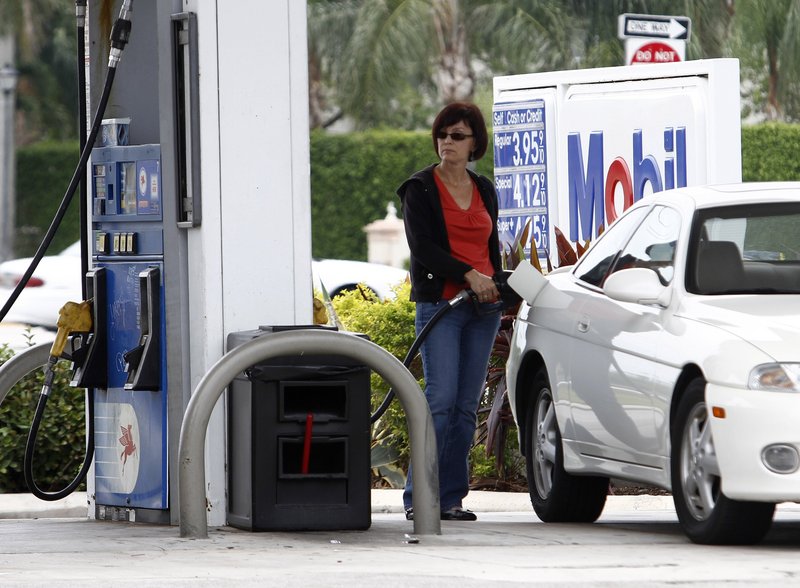SAN FRANCISCO — Even though crude prices fell by nearly 15 percent last week, consumers shouldn’t expect U.S. gasoline prices at the pump to follow suit just yet.
What drivers may see, however, is a slow drift lower.
“Retail prices lag wholesale prices on the way up and the way down,” said Jeff Lenard, a spokesman for the National Association of Convenience Stores, a trade group for an industry that sells 80 percent of the nation’s gasoline.
That descent may just be getting under way this week.
On Monday, the average U.S. retail price for a gallon of regular gasoline stood at $3.96 a gallon, according to AAA’s daily survey of gas stations, down from $3.966 a day earlier.
But U.S. prices are still above the week-ago average of $3.952, and they’re also just a few cents short of the record $4.114 price, which was set on July 17, 2008.
Separately, the twice monthly Lund-berg Survey showed that a gallon of self-serve gasoline nationwide hit an average of $4 on Friday.
“Customers generally don’t see the first few days of wholesale price increases because they are absorbed, full or in part, by retailers trying to keep customers,” Lenard said. “On the way down, the opposite happens and retailers try to make up for what they lost on the increase.”
So consumers are likely to be disappointed if they expect any immediate relief following the hefty pullback last week of nearly $17 a barrel in the crude oil market.
Still other factors explain the lag that follows swings in crude, which makes up 68 percent of the price of gasoline at the pump.
For one thing, there’s always volatility. Crude and gasoline futures rallied Monday, with crude adding 5.5 percent to settle at $102.55, as gasoline futures tacked on over 6 percent.
Concern over the impact of flooding among the Gulf Coast refineries was one of the key reasons for Monday’s spike in gasoline futures, analysts said. In some parts of the mid-Mississippi River Valley, river levels are reaching levels not seen since at least the 1930s.
“Volatility can be the friend of retailers, but it’s a friend that stumbles on your lawn with drunken breath sometimes,” said Tom Kloza, chief oil analyst at the Oil Price Information Service.
Think of it this way: If marketers had discounted gasoline by 30 cents a gallon in reaction to last week’s sell-off, they’d have to raise prices by half that amount or more today, Kloza said.
Consumers would look unfavorably on prices being jacked up. And gasoline stations always have to avoid doing things that send drivers to rival stations.
“Marketers are interested in keeping prices high as long as possible, but they watch to see what other competitors have done with prices,” said Charles Perry, president of energy-consulting firm Perry Management. “Prices will break first where there is the most competition, so sometimes it will be in less than two weeks.”
It generally takes seven to 10 days for prices to fully be passed through to the consumer, but Monday’s market result “scrambles the notion that it will be happening soon,” said Lenard, the trade group spokesman.
Send questions/comments to the editors.



Success. Please wait for the page to reload. If the page does not reload within 5 seconds, please refresh the page.
Enter your email and password to access comments.
Hi, to comment on stories you must . This profile is in addition to your subscription and website login.
Already have a commenting profile? .
Invalid username/password.
Please check your email to confirm and complete your registration.
Only subscribers are eligible to post comments. Please subscribe or login first for digital access. Here’s why.
Use the form below to reset your password. When you've submitted your account email, we will send an email with a reset code.